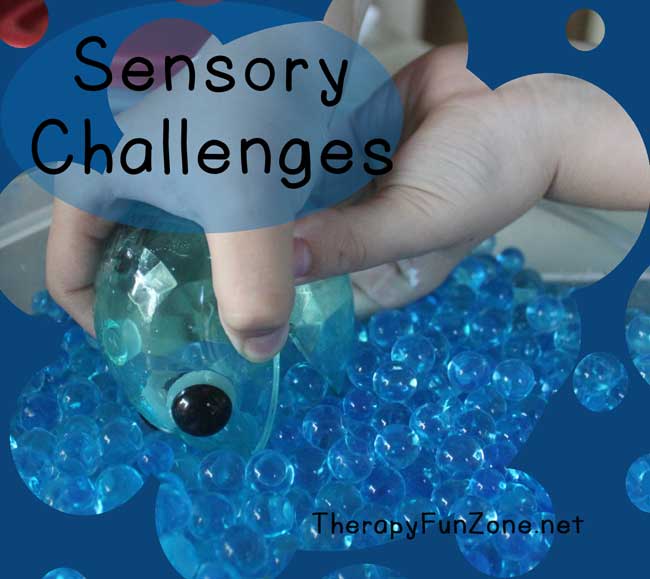How can you tell if it might be sensory processing dysfunction?
Let me start by saying that every child is different and reacts to things in their own way. Also, every person on earth has different tolerances to different sensory input. Things that drive one person crazy may not bother another person at all. This is normal. When sensory processing becomes a problem is when the reactions start to interfere with typical and necessary life funtions. It is a problem when someone can’t eat due to sensory problems. It is a problem when someone can’t function in school due to sensory problems.
Keep in mind also that therapy for sensory processing dysfunction is not going to fix everything, but it can help. The best thing you can get from therapy is an understanding of the problem so that instead of fighting the problem, you can work on it.
Figuring out a sensory processing problem is difficult because;
- the sensory system is complex and all parts of it are inter-related.
- Children are all individuals and all react differently to different situations.
- What looks like a sensory problem may be something completely different, and vice-versa.
The best way to determine a sensory processing problem is to take a sensory history. Formal assessments are not always useful because you can’t see how the child responds in his normal environment and typical situations.
A sensory history is when the parent or caregiver answers questions and gives observations in a formal or informal questionnaire. The parent knows their child best and knows their child’s responses to sensory stimulation in typical situations.
Many times a child’s responses can be placed into two categories; Hypersensitive, or Hyposensitive. Behaviors are often categorized as well as sensory seeking or sensory avoiding. Generally, if a child is hypersensitive, they will avoid the sensory input, and if they are hyposensitive, they will seek out more of that sensory input.
Signs of Tactile Dysfunction
Hypersensitive:
- avoids touching certain texture, and avoids messy play
- resists cuddling, not a cuddly child
- does not like to be touched, gets upset if people get too close
- has problems with seams and tags in clothes and socks
- does not like showering or going to the beach
Hyposensitive
- Doesn’t realize hands or face are dirty
- touches everything and anything constantly
- may be self-abusive, doesn’t seem to feel pain
- plays rough with peers
Signs of Vestibular Dysfunction
Hypersensitivity
- Avoids playground and moving equipment
- fearful of heights
- dislikes being tipped upside down
- often afraid of falling, walking on uneven surfaces
- avoids rapid, sudden or rotating movements
Hyposensitive
- Craves movement, especially fast or spinning
- never seems to sit still
- is a thrill seeker
- full of excessive energy
Signs of proprioceptive dysfunction
Hypersensitive (sensory avoiding, over responsive)
- Difficulty understanding where body is in relation to other objects
- appears clumsy, bumps into things often
- moves in a stiff and/or uncoordinated way
Sensory Seeking (hyposensitive)
- Constantly jumping, crashing, and stomping
- loves to be squished and bear hugs
- prefers tight clothing
- loves rough-housing, and may be aggressive with other children
Difficulty regulating input
- Doesn’t know how hard to push on an object
- misjudges the weight of an object
- breaks objects often and rips paper when erasing pencil marks


